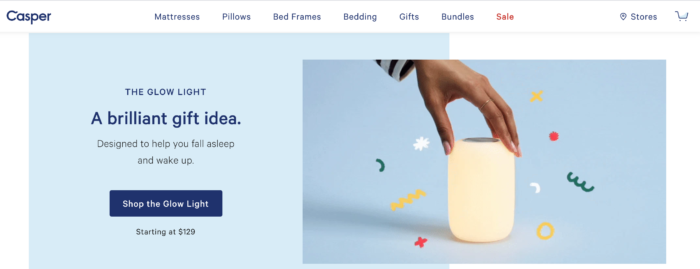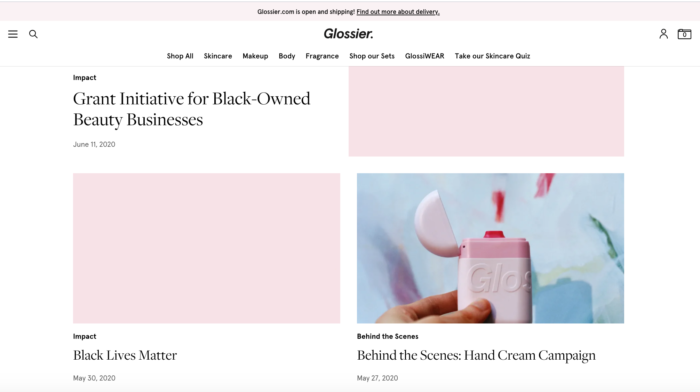Table of Contents
** Minutes
How venture capital is investing in ecommerce: by the numbers
Top 5 venture capital firms investing in ecommerce
3 common challenges faced by funded ecommerce businesses
What sounds like a lot of money?
- $339.7 million
- $290.5 million
- $186.4 million
- $181 million
- $163.5 million
- $77.5 million
The figures above are the total funding that Casper, Warby Parker, Glossier, Away, Dollar Shave Club, and Allbirds have respectively received from venture capitalists (VCs) for a combined total of $1.24 billion.
Direct-to-consumer (DTC) brands have been disrupting their traditional incumbent counterparts for some time now. But you can’t expect to get similar results by just replicating what’s emerged as attractive investment opportunities to date. To investors and be able to sell your online business, you’ll have to start something promising that’s new and unique.
The good news? Barriers to entry have never been lower, which makes it easy to set up an ecommerce shop — but challenging to find a unique space in the marketplace.
Does the world really need another <insert unicorn brand here>? Ecommerce venture capitalists are not interested in seeing the same things played out over and over again. For them, the greater the risk or disruption, the higher the return.
It can take 7-9 years for an investor to see a return on their investment (in many cases, never at all) and even longer until they get the high returns they’re hoping for. That’s a long time to wait, so it’s no wonder that commerce venture capitalists don’t just hand out money easily.
We’ve seen DTC darlings that have raised large fundraising rounds or even gone public with major financial issues come to light. Gone are the days of ‘growth at all costs’ and here to stay is the concept of calculated scalability.
The COVID-19 pandemic has also mixed things up — delaying launches, accelerating ecommerce growth, and proving that online shopping is a constant in a time when consumers can’t physically go into a store. Despite the pandemic, one thing’s for certain: ecommerce venture capital isn’t going anywhere.
In this guide to ecommerce venture capital, we’ll go into the details of how VCs work, what they look for in ecommerce brands, who the top VCs are in the ecommerce world, how to build a long-term profitable business, and more frequently asked questions about ecommerce venture capital.
How venture capital is investing in ecommerce: by the numbers
If your ecommerce business has the potential for explosive growth, then the best place to find top investors is the venture capital market. VCs are typically more inclined to provide large funding options, and these investors bring their own expertise to your company.
The ecommerce industry will eventually overtake brick-and-mortar retail
It has been forecasted that by 2040, approximately 95% of all purchases will be facilitated by ecommerce. Many people think we will come out of the coronavirus pandemic to a much different world — and even one where ecommerce has advanced 15 years within a few months.
VCs like to invest in internet companies
From 2010-2016, venture capital funds invested in over 2000 early stage deals in the ‘internet’ sector. While the investment landscape and what VCs look for is quite different since then, this is a trend that will only evolve.
VC spending is rising, but they want sustainable growth now
In 2018, venture capital financing invested a sum of $254 billion globally into around 1,800 startups. This was 46% more than in 2017. The past few years have seen notable startups have disappointing IPOs. Such unicorn ecommerce brands have acquisition costs that are too high and thus are not profitable. Ecommerce VCs are becoming increasingly wary of investing in companies that burn through cash so fast and can’t build a profitable and sustainable business model.
Top 5 venture capital firms investing in ecommerce
Emerging ecommerce brands looking to hit the next level of growth should aspire to work with reputable venture capitalists. Here are some highly experienced VC firms with a history of ecommerce investment success, especially in the United States.
1. Kleiner Perkins Caufield & Buyers (KPCB)
KPCB is a VC firm that has been around since 1972. They have backed about 900 businesses, including major technology companies like Amazon, Google, and Twitter. Kleiner’s investments have scored some of the biggest returns to date — its $8 million investment in Amazon resulted in approximately $1 billion profit. Kleiner made an early stake in Google in 1999 of $12 million. Google now has a market cap of $831 billion, as of 2019. They’ve invested in newer unicorns too including Peloton.
2. Lerer Hippeau Ventures
Lerer Hippeau Ventures is a New York-based early stage venture capital firm, meaning it invests in companies that are just starting up but have a large chance of success (often Series A rounds). The company has raised $453.5 million from investments across eight different funds. Its ecommerce investments include Allbirds, Casper, Chubbies, Everlane, Glossier, Soylent, Warby Parker, among others.
3. NEA
New Enterprise Associates is an American-based VC firm. It was the world’s largest VC firm in 2007 with over $20 million in assets during the year. It was founded in 1977 and has made over 1,000 investments since then — some of the most notable ones in the ecommerce space being Casper, Goop, ThirdLove, FabFitFun, Jet, Burrow, and more.
4. Greycroft Partners
Founded in 2006, this firm is slightly newer in comparison to others. However, its relative youth doesn’t mean it’s any less successful. It has invested in 125 companies across the globe including ecommerce players like 11 Honoré, Cotopaxi, Goop, Hubble Contacts, and Keeps. Its latest fund (made in 2018) was $250 million.
5. Forerunner Ventures
Founded in 2009, Forerunner Ventures specializes in investing in commerce-related businesses including Warby Parker, Away, Jet, Hims, Hers, Glossier, Bonobos, and others. As of 2019, it has worked with 49 companies and sold its ownership in 29. It made a funding round in October 2018, where it raised a total of $360 million.
3 common challenges faced by funded ecommerce businesses
After obtaining funding from a seed investor or ecommerce VC firm, there are challenges ahead that any ecommerce startups will have to face. Let’s take a look at some of the common hurdles to prepare for and overcome.
1. Product sourcing
Product sourcing is the process of purchasing or creating products that you can sell. Companies have to make sure that the manufacturer they’re buying from is reliable, that the product is worth the price, that they will have enough demand, and enough capital.
Achieving product design requires testing, samples, and rough prototypes. Some early-stage brands will buy an approximation or competing product, in store or online, to test and see what people like — or even try 3D printing prototypes. If you are inventing something new, you’ll need to find a seamstress or engineer to build V1. You’ll want to treat your prototype as if it’s for sale by gaining as much feedback as possible from potential customers.
2. Sustainable growth
Many ecommerce founders start by doing little things that don’t scale at first until momentum picks up. Advancing your business is great, but if the growth is not sustainable and there is no path to profitability, then ecommerce venture capitalists will be less likely to invest in your business or see returns from it.
Former brand operator turned ecommerce VC, Ajay Agarwal, partner at Bain Capital Ventures, suggests that ecommerce startups have plans for answering the following questions early on (which can affect not only their chance of receiving funding but even going public):
- Do you have a product that a segment of consumers really love?
- What are you doing that is going to be hard for someone else to copy?
- How do you compete and build a real competitive advantage?
- As you get bigger, how will you scale up without having to spend a lot of money on Google, Facebook, etc.?
- How will you have a direct relationship with your customer where you can own loyalty and have ways to get through to them across your own channels (website, SMS, email, etc.)?
- How will you get customers to come back and make a repeat purchase so you don’t have to spend additional dollars (and can drive additional lifetime value around the customer)?
“Repeat purchase and frequency are the single most important things to create an ecommerce business that’s really sustainable.”
Ajay Agarwal Partner, Bain Capital Ventures
Some products lend themselves to repeat purchases (consumables like coffee, energy bars, etc.), but not others like mattresses that you only buy once every 10 years or so. This may require you to expand your product portfolio over time (e.g., Casper getting into pillows, sheets, night lights, sleep technology, and even CBD, so it’s not a one-and-done purchasing situation).

While you may think that access to capital means you can fast-track your ecommerce brand by investing exclusively in all the paid social media you can afford, this approach can quickly backfire.
Ajay warns you must figure out how to control your own destiny and not get addicted to the Google SEM treadmill as acquisition costs will go up (there are only a finite number of keywords, and as you bid more, your marginal cost will increase). If you have to get your customer through Facebook and Google ads, it will be hard on your profits in the long-term.
The most effective channels are organic and SEO. If selling unique products, it might be hard when there’s no search volume around what you sell. In this case, you can explore partnerships, affiliates, earned social media, word-of-mouth marketing, SMS, repeat purchases, upsells, and cross-sells.

Here are a few other ways that VC-funded ecommerce companies have found success in unique ways:
- There are owned content plays (e.g., Glossier started as a blog that turned into a multi-million dollar brand because the founder knew what her audience was commenting and clicking on, what they were missing and wanting, and how she could meet those needs; Dollar Shave Club acquired customers through hilarious videos that went viral on Facebook).
- Some win because they are famous (Goop and Kylie Cosmetics have acquired the customer through their celebrity founders’ followings, which gives them a huge advantage).
- Others win because they create a brand voice and community that belong to a group of customers who have been historically underserved.
- Some brands have a structural advantage to how they manufacture or an innovative way to how they distribute (e.g., Zappos launched a revolutionary returns policy and Warby Parker’s new business model of sending you samples before you buy has been mimicked).
Of course, you can’t just copy what others have done. What worked in the past existed at that point in time and probably wouldn’t work today.
“I never try to run the same playbook twice. The pitch resonating today is very different from a few years ago. DTC isn’t new anymore. You have to make up a brand that’s authentic. Consumers are savvy — they can feel and embrace authenticity and if someone’s faking it, they will repel against it. There are lessons to be learned from other companies but you have to make it your own — your values, your business model, your product, etc.”
Kirsten Green, Founding Partner, Forerunner Ventures
Whatever path you choose for sustainable growth, don’t make the mistake that many early-stage founders make and fail to do enough research on who your actual customer base is.
Founder of Lee Commerce Ventures Michael Lee explains that it doesn’t matter how fantastic your product is — you need to have an intimate knowledge of who you are selling to and who your true target market is including how they spend their free time, what their average salary is, etc. If you don’t, it will become obvious when you attempt to communicate with them and roll out new products that miss the mark.
Your brand voice, ethos, and everything you do speaks to how well you know your customer. The more narrow you can get that, the better. For example, Blue Apron initially thought their target market was ‘everybody who eats’ — but they went on to learn that their offering resonated most with empty nesters and those fresh out of college.
In addition to the various levers mentioned above, the other keys to sustainable growth that are attractive to ecommerce venture capitalists include the following factors working together:
- Timing (being early enough and directionally correct in where things are going)
- An incredible founder or founding team
- A thorough understanding of metrics that prove out business models
- The ability to grow with your consumer base and evolve with them
3. Scalable order fulfilment
Order fulfilment refers to the picking, packing, and shipping of customer orders. Upon receiving funding, ecommerce companies might invest in their own fulfilment infrastructure or partner with a professional fulfilment company.
While the fulfilment process may seem straightforward, there are many problems that an ecommerce startup may face at different stages of growth. For example:
- Losing customers due to a bad delivery experience: Your path to sustainable growth can be hindered if your customers receive damaged shipments, slow deliveries, or a lack of communication or order tracking. A strong customer support setup is necessary to provide consumers with the best experience. If your customers are unhappy, they will not remain loyal and your business will be unable to grow.
- High shipping costs: If you choose to operate your own fulfilment centre(s), you are limited to shipping out orders exclusively from those locations. This means your average shipping zones will be high and you are thus stuck paying higher shipping costs and having your customers wait on longer transit times. If you have access to fulfilment centres that serve your customer base, you can be closer to where the majority of your customers reside.
- Scaling globally: International fulfilment is a natural path for most VC-funded ecommerce companies. Startups that ship items internationally from overseas may experience problems in delivering products over borders such as orders getting stuck at customs, high international shipping costs, and long transit times. A global solution can help streamline deliveries and simplify duties to provide a better customer experience.
- Experiencing stockouts: Any fast-growing ecommerce company should be prepared to sell products fast — but sell too fast and you’ll see backorders and customers who don’t get what they need from you fast enough. You must be able to manage inventory turnover seamlessly and prevent stockouts. Tools that help with demand forecasting can help ensure you stay a step ahead with reordering inventory.
How a 3PL partner can jumpstart your ecommerce business
Most founders don’t get into business to take on logistics. Many ecommerce companies outsource fulfilment to a reliable third-party logistics (3PL) provider like ShipBob.
This way, founders can focus on growth rather than matters such as order processing, inventory management, and warehousing. A global 3PL partner like ShipBob has deep fulfilment expertise and works with thousands of the fastest-growing ecommerce startups.
While Amazon has dominated online sales for a long time, the rise of DTC businesses has shown consumers are willing to purchase directly from early stage brands. To compete against Amazon and major established retailers, ecommerce startups need to level the playing field through shipping and a sound ecommerce fulfilment strategy.
ShipBob is a VC-funded logistics and technology company that can help you offer fast delivery through an ever-growing network of fulfilment centres, proprietary technology, data and analytics, and best-in-class support. Hiring an experienced 3PL to take care of fulfilment operations will free up your team’s time so you can focus on growing your business to its full potential and keeping your loyal customer base over time.
Conclusion
With access to ecommerce venture capital, your ecommerce business can scale faster and with more resources. There are plenty of renowned VCs that want to work with ecommerce startups that can prove out their sustainable growth business model.
To learn how ShipBob can help your ecommerce business grow sustainably, click the button below to contact a member of our team about fulfilment.
Ecommerce venture capital FAQs
Here are some of the most frequently asked questions we’ve heard from early stage ecommerce startups when it comes to ecommerce venture capital — and answered by a few leading venture capitalists we featured on our virtual ShipBob Operators series.
What are the differences between seed, Series A, Series, B, Series C, and other funding rounds?
When it comes to seed round vs. Series A and so on, the names of these funding rounds don’t mean much beyond naming the funding chronology. Funding amounts will vary greatly and are used to get you to the next level of growth.If you have no path to profitability, don’t raise more than a Series A. After that, it’s more harm than help. Be sure to put the capital you raise into long-term planning so that it’s not just transactional in nature.
To speed up growth, you can do so with much better leverage if you are profitable. Being profitable allows you to control your destiny. Michael Lee, founder of Lee Commerce Ventures, highly encourages founders to bootstrap their business early on and to know that revenue is not the same as profits.
Is it a good idea for founders to cold email VCs?
Ajay believes it’s a wasted time and effort as that’s difficult to get their attention. However, Michael Lee, founder of Lee Commerce Ventures, used to respond to every cold outreach or inbound received. This was to emulate an inclusive process of interacting with every person that reaches out and provides transparent feedback, so they could get clarity on what they are doing right and wrong.
Who is the best first investor in an ecommerce startup?
Ajay says that in the early days when you have no money and no product, you’re likely going to have the best luck when you reach out to the people who know you and believe in you (e.g., business leaders in the community, your former boss, your friends, and family). The people who most typically invest in early stage founders are those who know them personally and have seen what they’ve done in other parts of their life. This may bring forth your first $105-$50k of investment.
Once you have a product, you can go to seed investors in your local community or investors that focus on DTC brands. Know who is in your city that focuses on investing in brands in the seed stage. The beauty of running a DTC brand is that any investor can buy your product and check it out themselves.
When should you use debt vs. equity?
Ajay said that funding ‘uncertainty’ (e.g., a new concept where there is no precedent set if the product work, sell, etc.) is when equity is used, whereas debt should only be used to fund known things (e.g., if you have inventory sitting in a warehouse and know that in the worst circumstances, you can still sell it).
For the latter, you can simply go to a lender and have them lend you $15k if you know, for example, that your inventory is worth 50 cents on the dollar. Lending and debt can help give you working capital, where equity is for the unknown.
How much money should you raise?
The startup capital needed prior to launching a business will depend on many factors and vary for every company. Ajay recommends to raise a little money early on to take out a couple of risks and continue to raise incremental amounts until you remove most risk. In other words, find the minimum you need to get to the next inflection point.
Your path might look something like this:
- To start, identify what the smallest amount is needed to get a product out the door that people love.
- Once you’ve done that, figure out what the next thing is you need to overcome.
- Once you scale that (and can demonstrate that you’ve done so in a cost-effective way, getting customers to come back), then you can expand your product line.
- Build out a set of products that drive repeat usage and result in your average spend per household going up.
Make sure you have enough money to get to the next milestone, but not so much money that you scare off investors. The goal is to prove more and more, and take more risk off the table.
What do ecommerce venture capitalists look for in early-stage brands?
While this will vary for each founder, business model, and ecommerce venture capitalist, common examples include:
- Being profitable on the first customer order or soon thereafter (e.g., subscription model), allowing an ecommerce business to test new things, hire appropriately, and have cash flow to reinvest in the business
- Having customer service that sets them apart from incumbent brands
- An incredible management and founding team
- Competitive advantages (e.g., intellectual property, utility patents, supply chain efficiency, etc.)
- Healthy unit economics (not just strong gross margins but contribution margins, taking all variable costs into account that enable ecommerce businesses to scale sustainability)
- The infrastructure for scalable marketing and distribution (e.g., you can’t spend 30-40% of the funding you raise on Facebook and Google ads, as what worked over the last 10 years won’t work going forward)
- Cash efficiency and a clear path to profitability (in the last year, there have been many examples of VC-funded ecommerce companies who try to test public markets when they’ve never had a month of EBITDA positive numbers)
- An understanding of where the market is going, what it’s going to take to be successful in the next leg of the journey, what’s going on with consumers and what’s shaping their lives, being able to meet a need that is otherwise being unmet, and a business model that fits the future and makes the most of an inefficient market
Read more: What VCs Look for in DTC Brands When They Invest [With Kate McAndrew]



